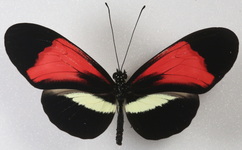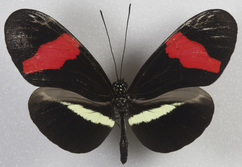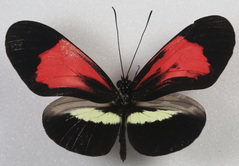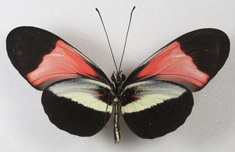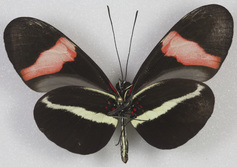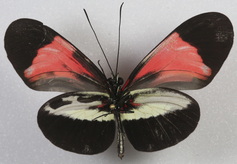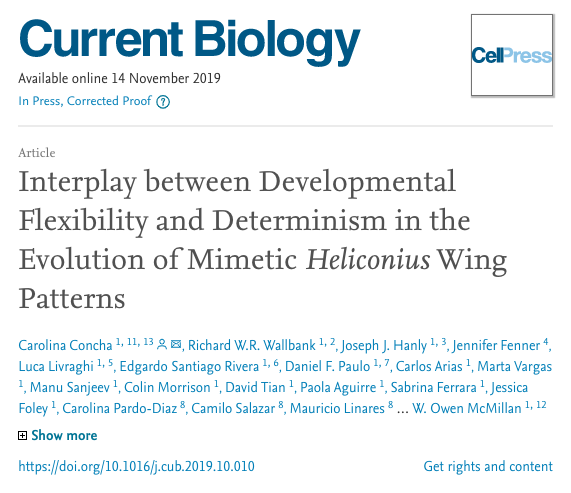Genetics of Adaptive Traits
The ability to link known genes to observable and quantifiable traits will allow us to understand the genetic basis of phenotype. Widespread attainment of this goal will revolutionize the field of biology. Researchers will be able to expand upon foundational theoretical research by quantifying molecular linkage between behavior, morphology, and genes precisely and repeatably.
We have used the CRISPR/Cas9 system to study the genetic basis of Heliconius phenotypes. This is done by excising or introducing DNA gene regions hypothesized to code for the wing colors and patterns significant for the evolution of Müllerian mimicry characteristic of Heliconius.
We have used the CRISPR/Cas9 system to study the genetic basis of Heliconius phenotypes. This is done by excising or introducing DNA gene regions hypothesized to code for the wing colors and patterns significant for the evolution of Müllerian mimicry characteristic of Heliconius.
Heliconius erato petiverana: Top set- mutant 1 (left: dorsal / right:ventral)
Center set- characteristic wild type (left: dorsal / right:ventral)
Bottom set- mutant 2 (left: dorsal / right:ventral)
*Note differences in red forewing band and yellow hindwing rays between mutants and the wild type*
Center set- characteristic wild type (left: dorsal / right:ventral)
Bottom set- mutant 2 (left: dorsal / right:ventral)
*Note differences in red forewing band and yellow hindwing rays between mutants and the wild type*
